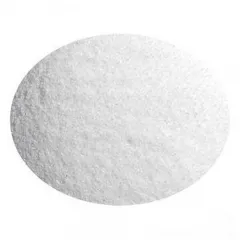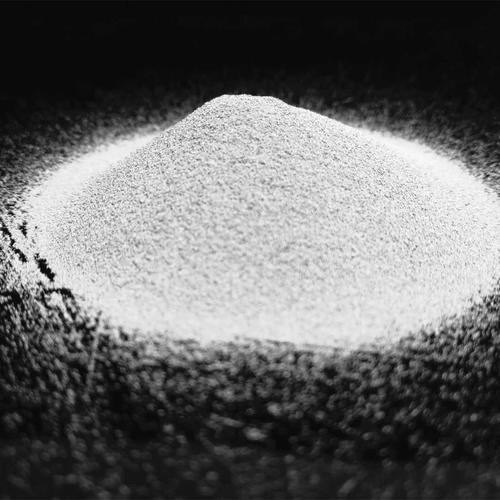1. Introduction
In a major development just 24 hours ago, the U.S. Department of Commerce announced new export controls on high-purity titanium powder used in defense-related additive manufacturing, citing national security concerns. This move has sent ripples through the global supply chain, affecting everything from aerospace prototyping to medical implant production—and reigniting interest in where titanium powder comes from, what it’s used for, and how much it costs.

Whether you’re an engineer sourcing materials for 3D printing, a researcher exploring advanced ceramics, or simply curious about high-performance metals, understanding titanium powder is essential. From pure titanium powder to complex alloys like Ti6Al4V powder, this versatile material powers innovation across industries.
2. What Is Titanium Powder?
Titanium powder—often referred to as Ti powder—is a fine particulate form of titanium metal. It can range from irregular HDH (Hydride-Dehydride) particles to highly spherical gas atomized titanium powder, engineered for specific applications. Unlike bulk titanium, powder form enables advanced manufacturing techniques like additive manufacturing (3D printing), metal injection molding, and thermal spraying.
It’s important to distinguish titanium powder from TiO2 powder (titanium dioxide), a white pigment used in paints, sunscreens, and food. While both contain titanium, TiO2 powder is a ceramic oxide, not a metal—and not suitable for structural or conductive uses.
3. Types of Titanium Powder
Not all titanium powders are created equal. The right type depends on your application:

- Pure titanium powder: Used in chemical processing and biomedical implants due to its biocompatibility and corrosion resistance.
- Ti6Al4V powder (also called Ti64 powder): The most common titanium alloy powder, ideal for aerospace and medical 3D printing.
- Titanium nitride powder and titanium carbide powder: Extremely hard ceramics used in cutting tools and wear-resistant coatings.
- Titanium diboride powder (TiB2 powder) and titanium boride powder: High-melting-point compounds for refractory applications.
- Titanium nanopowder and TiO2 nano powder: Used in catalysis, sensors, and advanced composites.
- Titanium flash powder: A pyrotechnic mixture (not pure titanium) used in special effects—handle with extreme caution.
- Titanium coated diamond powder: Combines diamond hardness with titanium’s bonding properties for polishing and grinding.
Spherical titanium powder, especially gas atomized titanium powder, is preferred for titanium powder additive manufacturing because it flows smoothly and packs densely in 3D printers.
4. Key Uses of Titanium Powder
Titanium powder uses span multiple high-tech sectors:
- Aerospace: Jet engines, airframes, and landing gear made via titanium powder for 3d printing reduce weight and improve fuel efficiency.
- Medical: Hip implants, dental fixtures, and surgical tools benefit from biocompatible titanium alloy powder.
- Automotive: High-performance parts leverage titanium’s strength-to-weight ratio.
- Energy: Used in hydrogen storage (via TiH2 powder) and battery research.
- Defense: Armor plating and missile components often rely on titanium metal powder.
Additive manufacturing has become the fastest-growing application, driving demand for consistent, high-quality titanium 3d printing powder.

5. Pricing and Market Trends
The titanium powder price varies widely based on purity, particle size, morphology, and alloy type. As of mid-2024:
- Pure titanium powder price per kg: $80–$150
- Ti6Al4V powder price: $120–$250 per kg
- 3d printing titanium powder price (spherical, gas atomized): Often exceeds $200/kg
- Titanium diboride price: $50–$100/kg depending on fineness
Factors like global supply chain constraints, energy costs for production, and export regulations (like the recent U.S. announcement) can cause sudden shifts in titanium powder cost. Always check with a trusted titanium powder supplier for real-time quotes.
Many buyers search for ‘titanium powder for sale’ or ‘buy titanium powder’ online, but quality varies—certifications like ASTM F1580 (for Ti64) are crucial.
6. Production Methods
Two dominant methods produce commercial titanium powder:
- HDH titanium powder: Made by hydrogenating titanium sponge, milling it, then dehydrogenating. Cost-effective but irregular-shaped—best for pressing and sintering.
- Gas atomized titanium powder: Molten titanium is sprayed with inert gas to form perfect spheres. Ideal for 3d printing but more expensive.
Other methods include plasma rotating electrode process (PREP) and electrolytic techniques, though less common.
7. Related Metal Powders: Molybdenum and Tungsten
While titanium dominates lightweight applications, molybdenum powder and tungsten powder serve high-temperature and high-density needs:
- Molybdenum metal powder (moly powder) is used in furnace parts, electronics, and as an alloying agent. Variants include molybdenum disulfide powder (MoS2 powder), a dry lubricant, and TZM powder for extreme environments.
- Tungsten powder (wolfram powder) offers the highest density among common metal powders. Spherical tungsten powder and tungsten carbide powder are staples in cutting tools, radiation shielding, and wear parts. Global Tungsten & Powders Corporation is a leading supplier.
Both molybdenum powder price and tungsten powder price per kg are generally lower than titanium powder, but specialized grades (e.g., fused tungsten carbide powder) can be costly.
8. Choosing a Supplier
When looking to buy titanium powder or related materials, consider:
- Certification (e.g., ISO, ASTM)
- Particle size distribution and oxygen content
- Production method (HDH vs. gas atomized)
- Global reach—international titanium powder suppliers may offer better logistics
Reputable sources include companies specializing in additive manufacturing feedstocks, as well as established players like Global Tungsten and Powder for refractory metals.
9. Conclusion
Titanium powder is far more than just ground metal—it’s a gateway to next-generation manufacturing. Whether you need Ti64 powder for aerospace 3D printing, titanium nitride powder for coatings, or are comparing titanium metal powder price against alternatives like molybdenum or tungsten, understanding the nuances ensures you get the right material for your project. With evolving regulations and growing demand, staying informed is key for engineers, buyers, and innovators alike.
Our Website founded on October 17, 2012, is a high-tech enterprise committed to the research and development, production, processing, sales and technical services of ceramic relative materials such as Titanium. Our products includes but not limited to Boron Carbide Ceramic Products, Boron Nitride Ceramic Products, Silicon Carbide Ceramic Products, Silicon Nitride Ceramic Products, Zirconium Dioxide Ceramic Products, etc. If you are interested, please feel free to contact us.
